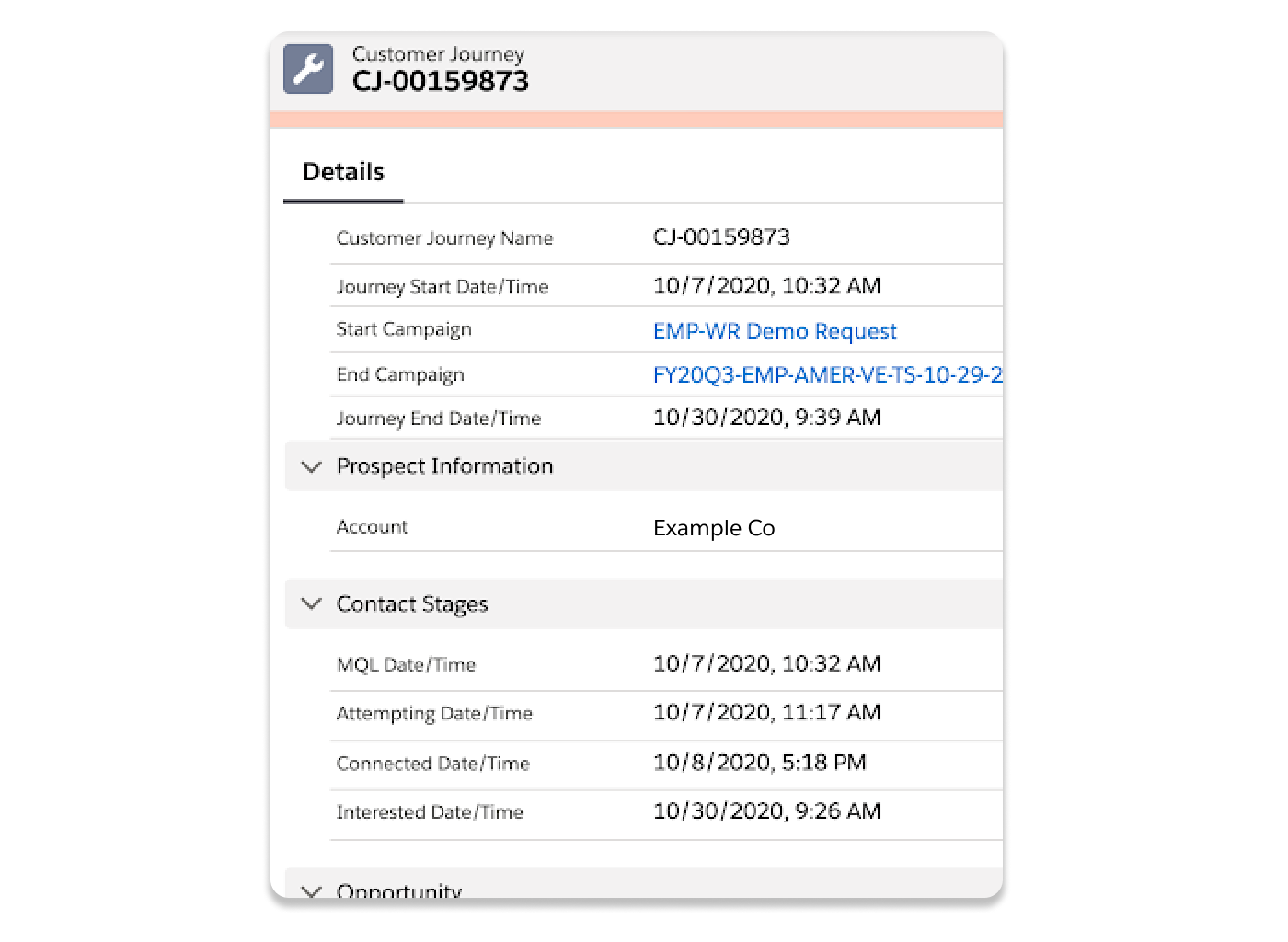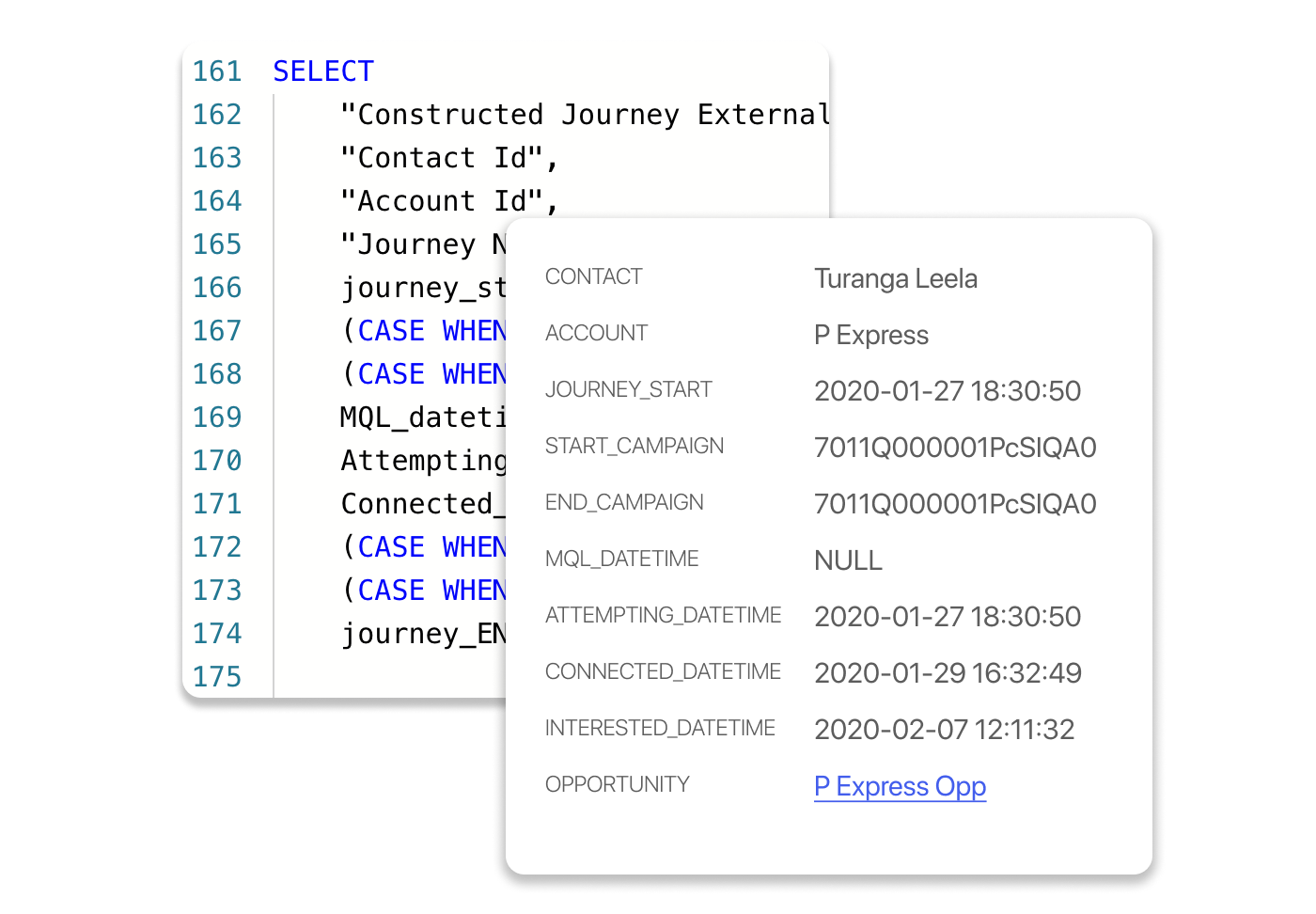Today, we’ve got a Census customer guest post from Phillip at Handshake. If you're not familiar, Handshake is the number one site for students to find a job, connecting 8 million active students across 1,100 schools with 500,000 employers—including all 500 of the Fortune 500—on their platform. Phillip manages business systems for the Employer (or B2B side) sales team at Handshake and has been leading the charge on improving sales processes and tracking sales data at Handshake, Samsara and SurveyMonkey for 6 years. Today Phillip’s sharing his powerful technique for building complex Salesforce objects with SQL to streamline analytics.
Like most Salesforce customers, Handshake monitors Opportunities closely as they move from creation to closing. But we found that Opportunities only captured a slice of the complete customer journey through our sales funnel. We wanted to track the full journey, starting from the first interaction with the sales team, well before the opportunity gets created. These insights help guide our go-to-market teams on channels that are effective and areas in the journey that need improvement.
At Handshake, the journey begins when a prospect first interacts with our sales team or takes an action to qualify as an MQL. Sometimes, this is a webinar sign-up or demo request, but other times an SDR might proactively reach out to the prospect to discuss ways they could better leverage the Handshake platform. The Customer Journey ends when the prospect is either disqualified, goes cold, or is associated with an opportunity that moves to either closed won or closed lost.
We decided to build a new Customer Journey custom object to track this lifecycle. Our Customer Journey object is a single record that logs important milestones a prospect reaches while in the sales funnel (our prospects are all contacts because managing leads are a nightmare, but that’s a different post!) We’d use the Customer Journey custom object to log the journey start, journey end, start campaign, end campaign, and the date/time of important milestones between. It looks like this:

Initially, we planned to do this in Salesforce using native platform tools. We would create an Apex trigger on Tasks, Contacts, and Opportunities to build a system of automation and custom relationships. Then we would generate a new Customer Journey when appropriate and update an existing customer journey when an active journey already existed. This would work for generating and maintaining customer journeys going forward, but we would need to write a complex Apex script to reconstruct historical customer journeys. In addition, the Salesforce task and contact history tables we would need to query were several million rows each, and Salesforce's SOQL does not play nicely with large datasets.
I realized that an easier approach would be to use Census to construct the Customer Journey records nightly with a SQL query to our data warehouse. SQL is great for constructing tables, and it was much easier to use for this purpose than an Apex script.
Using a Census model, I wrote a query that uses our daily snapshot of Salesforce data to construct a table of journey events, and we can extend that to include other data sources in the future.

After that, it was simple to map this table to the Customer Journey object and set up a nightly sync in Census to upsert all Customer Journeys. In addition to getting all historical customer journeys into our Salesforce instance in one go, there was no custom code to maintain or governor limits to worry about going forward, since the nightly Census sync would keep everything up to date.
We've been using Customer Journeys now for several months, and it's given us insight into how prospects interact with our sales team and use marketing collateral. This data will continue playing a role in predicting close rates based on specific customer interactions, analyzing stage by stage conversion rates to improve our processes, and monitoring pipeline health indicators as we grow our sales and marketing teams.
Interested in how Census can help your company reach new heights? Book a demo to get the deets from a product specialist then start your free trial to see how Census can empower your data teams. 💪


















